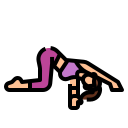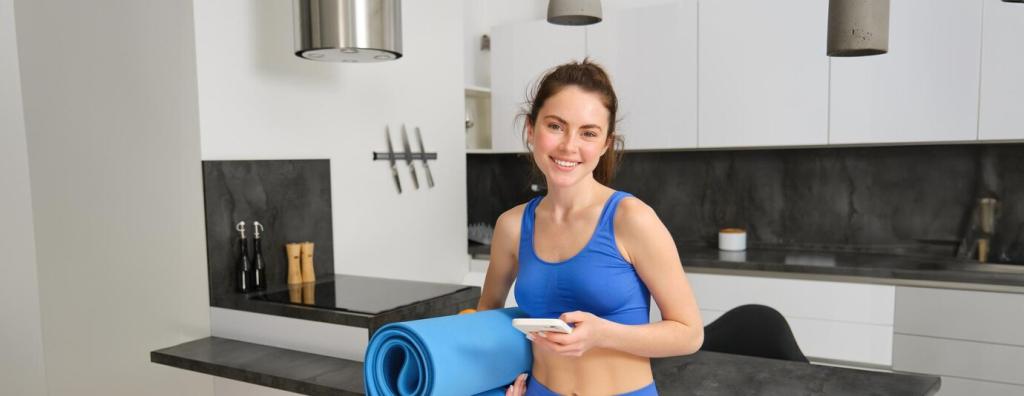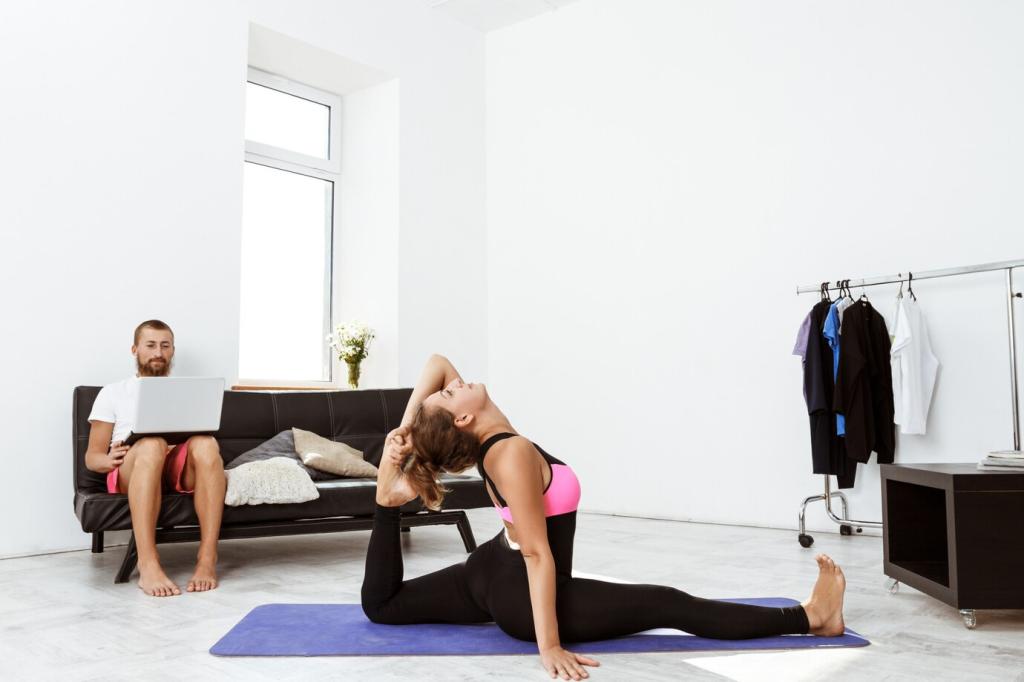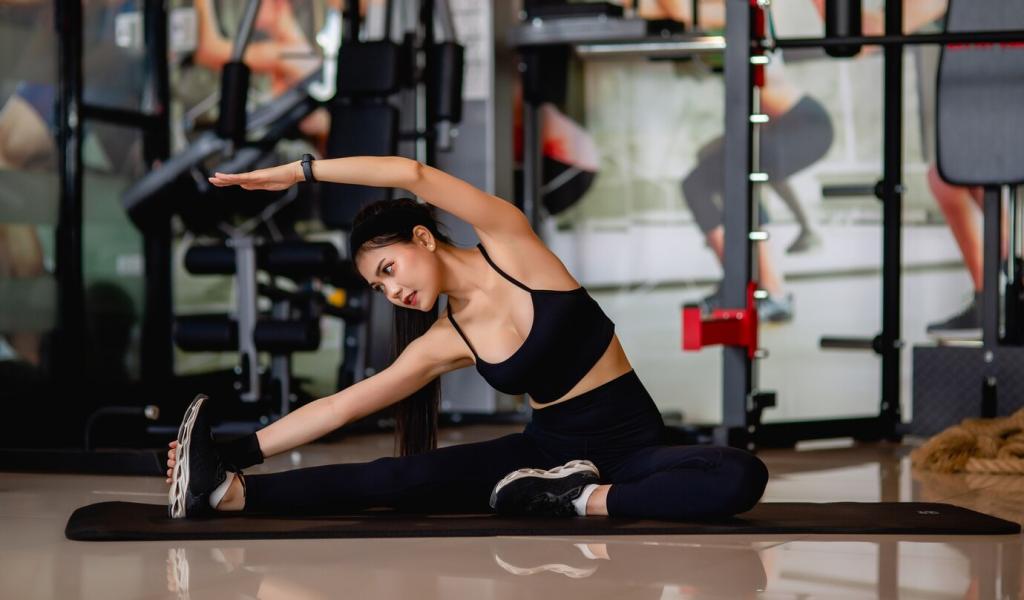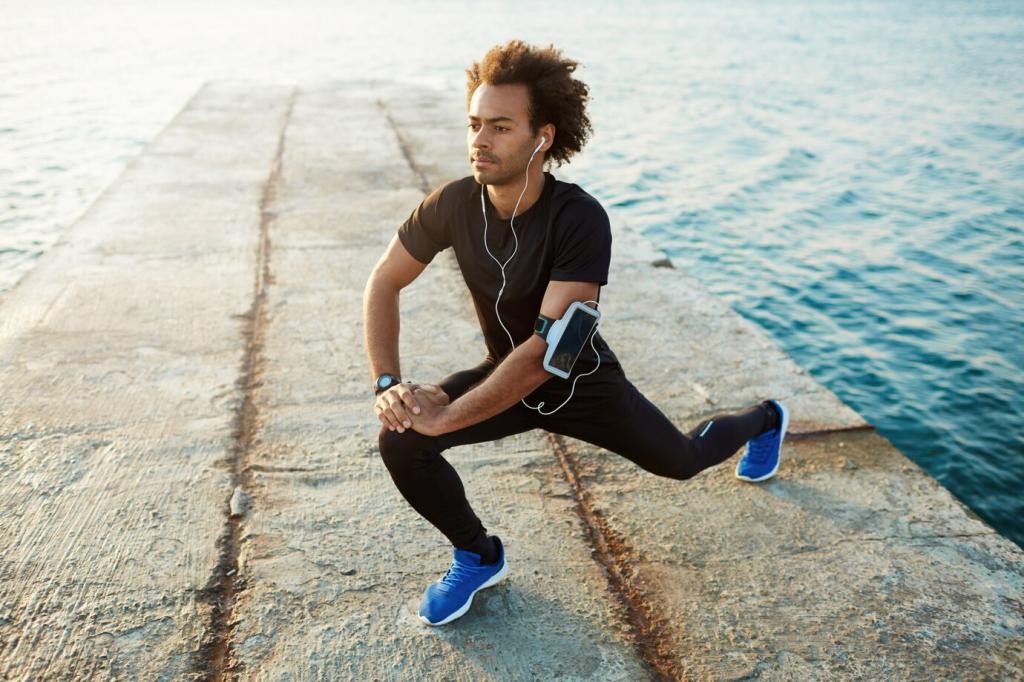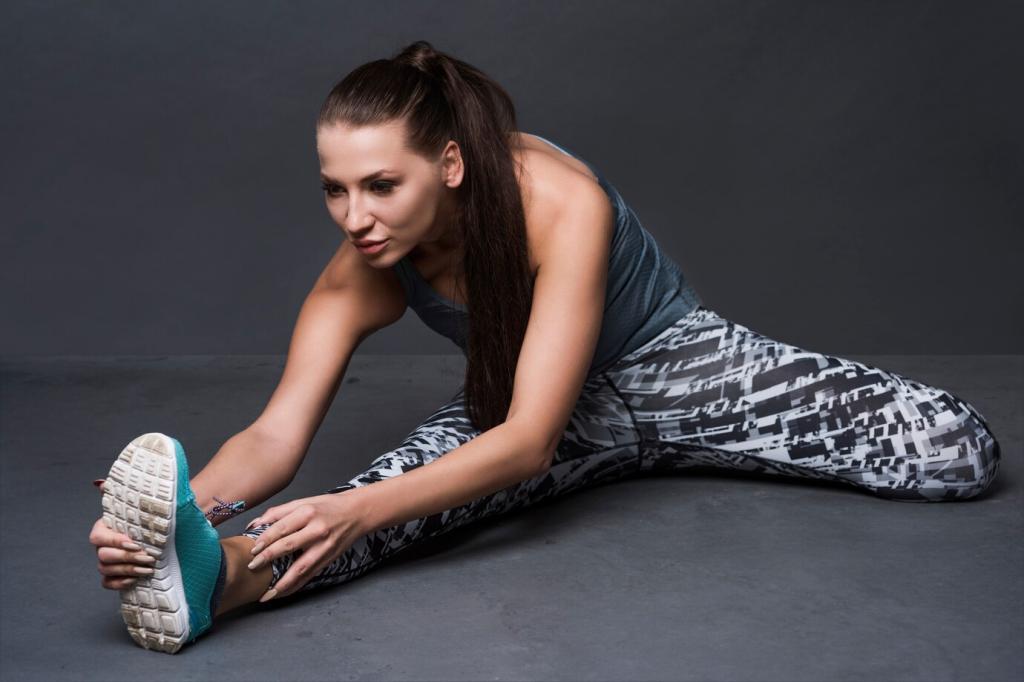Sport-Specific Flows for Real-World Results
Cycle through low lunge, half split, and heel-elevated calf stretch, syncing each shape with calm breaths. Add gentle isometric pulses at end range. You will notice smoother turnover, easier stride length, and happier knees on longer efforts.
Sport-Specific Flows for Real-World Results
Try puppy pose, thread-the-needle, and sphinx with scapular slides. Keep ribs quiet while the shoulder opens, so range is anchored by stability. Many swimmers report cleaner catch mechanics and less post-practice tightness after just two consistent weeks.
